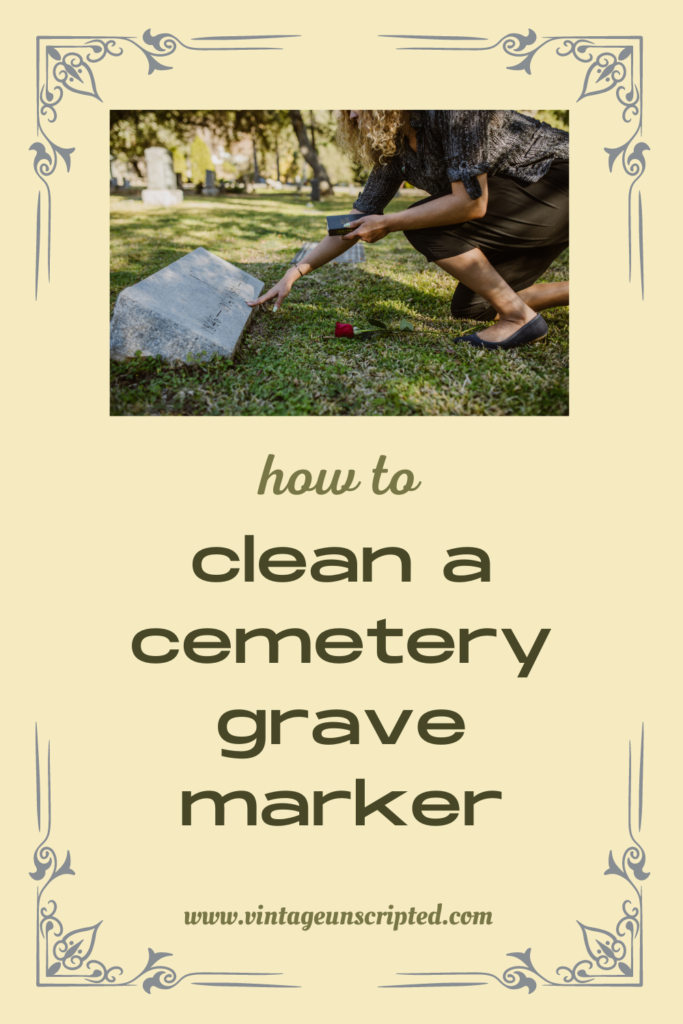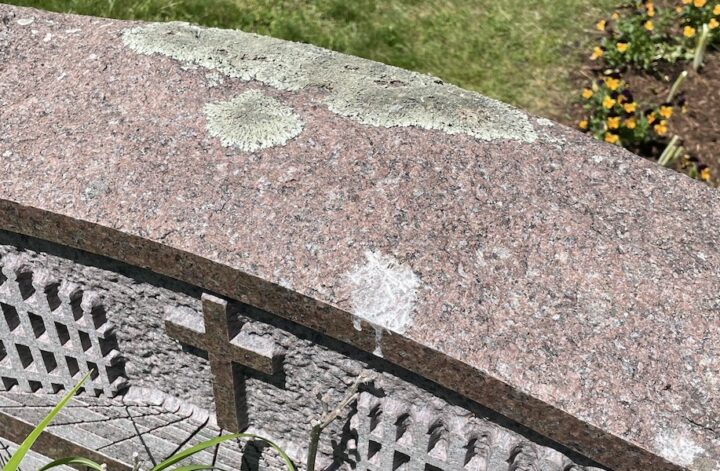Memorial Day is a time we honor the departed. The placing of flags and flowers is a tradition. But many people also use the day to clean the headstone of a loved one. Which got me to thinking, how exactly do you clean a cemetery grave marker headstone properly without doing any damage?
First a little history. Originally called Decoration Day, the history of Memorial Day begins in the aftermath of the Civil War, which claimed more lives than any other war in American history. The sheer volume of burial space needed led to the establishing of the first national cemeteries. On the first Decoration Day, May 30, 1868, former General, future President and then Congressman James A.Garfield addressed the crowd at Arlington National Cemetery, and 5000 participants placed flowers at graves as memorial decorations for the 20,000 Civil War dead.
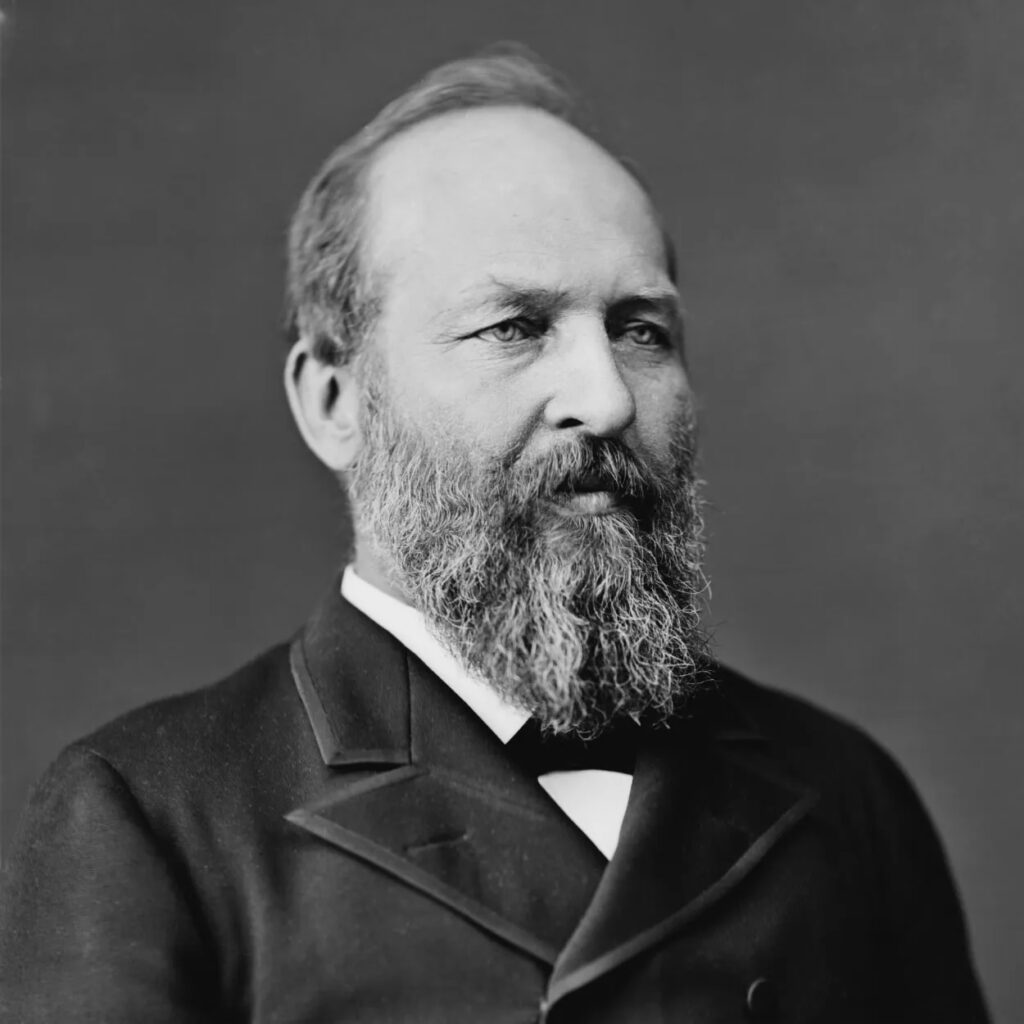
Memorial Day has evolved to honor the dead of all wars, not just those who died in the Civil War. It became an official national holiday in 1971, placed on the calendar for the last Monday in May. The theory was the three day weekend would lead to more participation in memorial cemetery events.
Nature and time take their toll on grave markers. Grave markers from the early days of America are often so eroded from centuries of weather that they are barely readable. Dirt, air pollution, fertilizer, moss, algae, lichens, bird poop, tree sap and other environmental factors make their mark on grave markers of all ages.
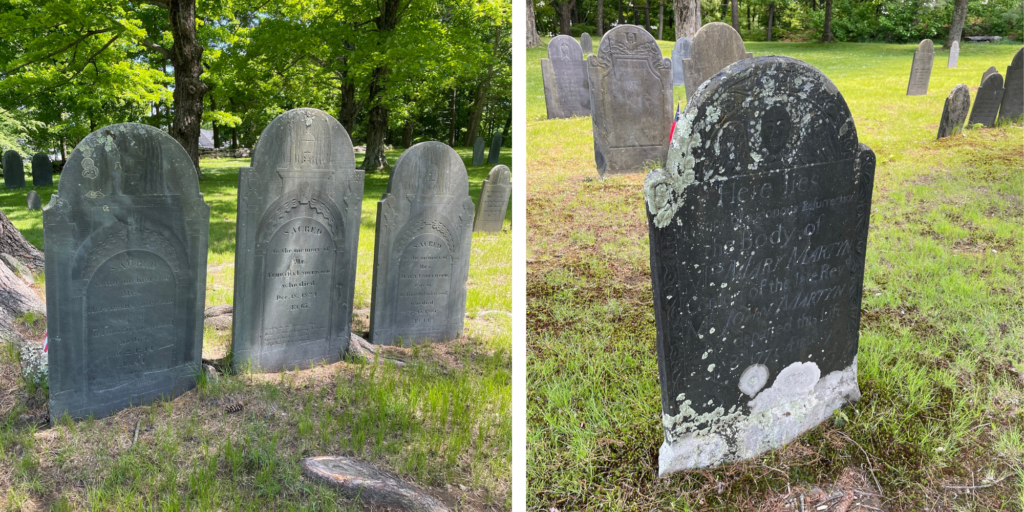
Before I get into how to actually clean a grave marker, please note that I’m not an expert and I’m not suggesting that anyone attempt to clean a hundred year old marker based on this post. I’m talking about basic techniques for cleaning vintage gravestones, like my mom and dad’s that has a healthy crop of lichens that a respectful daughter should have removed again last year. Or the year before that. Or…
There are lots of sites out there from cemeteries and monument companies, as well as a gem of a site from the National Park Service with advice on how to clean a cemetery grave marker. According to the National Park Service, when you clean a grave marker, it should be done with the gentlest means possible. The goal should never be to make the stone look new.
Some cleaning DONT’s, shared by most sites:
- don’t use bleach or other salt heavy cleaners
- don’t pressure wash or use power tools with brushes
- don’t use strong acids or bases
- don’t clean in strong sunlight, high heat or in the cold as it can cause cracking
Sites also have some common DOs. Make sure the monument is strong enough to withstand a cleaning. This less likely to be a problem with markers from the past 75 years, but make sure its seated properly and no parts are crumbling or loose. Consider the kind of stone, granite can handle more than a softer stone like marble can. Test your cleaning solution in an inconspicuous place first. Always start with the mildest method, and only scale up to stronger methods if it’s necessary. And the starting point for any cleaning process is to gently remove any loose debris. Having loose bits of dirt or small stones in your cloth or sponge can scratch the stone.
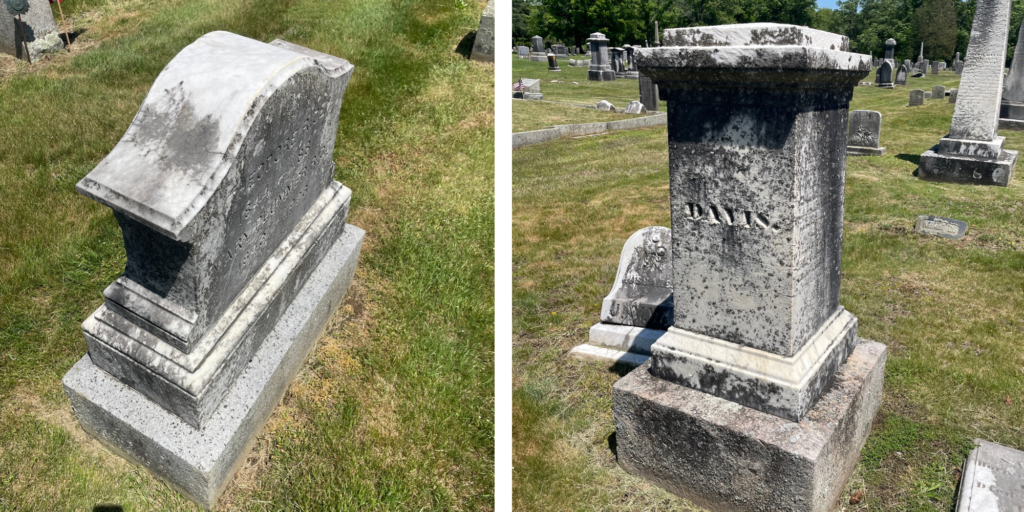
Tools you might need include:
- buckets or jugs of water, lots of it. Using lots of water for rinsing is important
- sponge or microfiber
- bucket for mixing cleaners
- mild dish detergent like Dawn
- Mr. Clean Magic Eraser
- soft bristled brush, either natural or nylon (although some say nothing but natural). Per the National Park Service, it should be soft enough to use on the hood of your car.
- wood or plastic scraper, nothing metal, no no no. A plastic kitchen bench scraper used when making bread might be perfect.
- bamboo skewers or cotton swabs for getting in letters
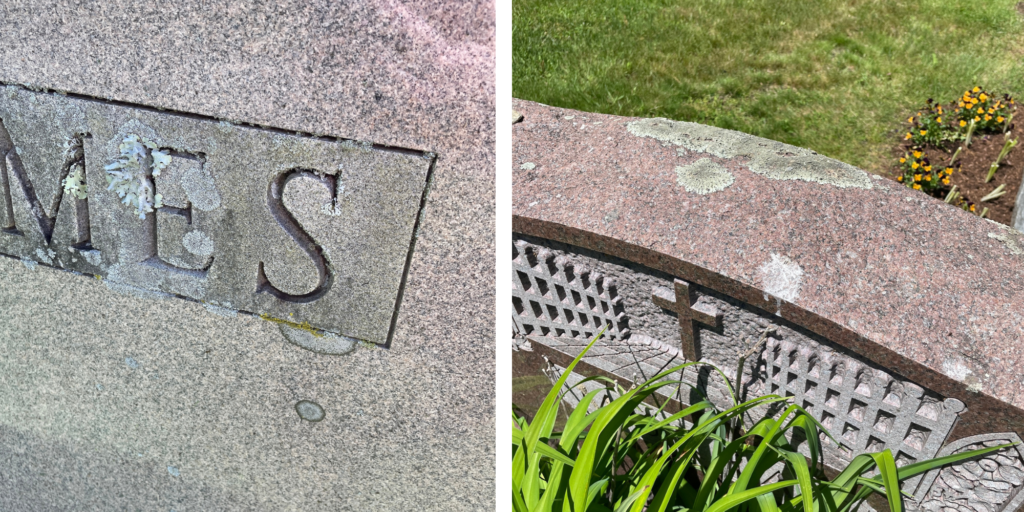
Instructions posted by Olivewood Memorial Park in Riverside, CA, suggests mixing 3-4 tablespoons of mild dish detergent (multiple sites recommend Dawn) in a quart of water, then scrubbing gently with a bristle brush, not a plastic or metal brush (oops, sorry Mom and Dad, won’t do that again). They also report people having good results with a Mr. Clean Magic Eraser.
For mineral deposits like calcium, Olivewood recommends using a pumice stone grill brick and gently rubbing it off. But they also emphatically state that grill bricks should not be used on marble, bronze, porcelain or other non-polished surfaces. Whatever cleaning method you use, be sure to rinse all the cleaner off completely.
Patten Monument Company suggests taking a first gentle wash of the stone with a sponge before applying a brush. (I’d use a microfiber cloth.)
The Farmer’s Almanac recommends making a baking soda poultice to remove stains. Mix 1 cup of baking soda with 5 tablespoons of dish detergent and mix in enough hydrogen peroxide to make a thick paste. Allow the paste to set for several hours before rinsing off. Gentle scrubbing is also helpful.
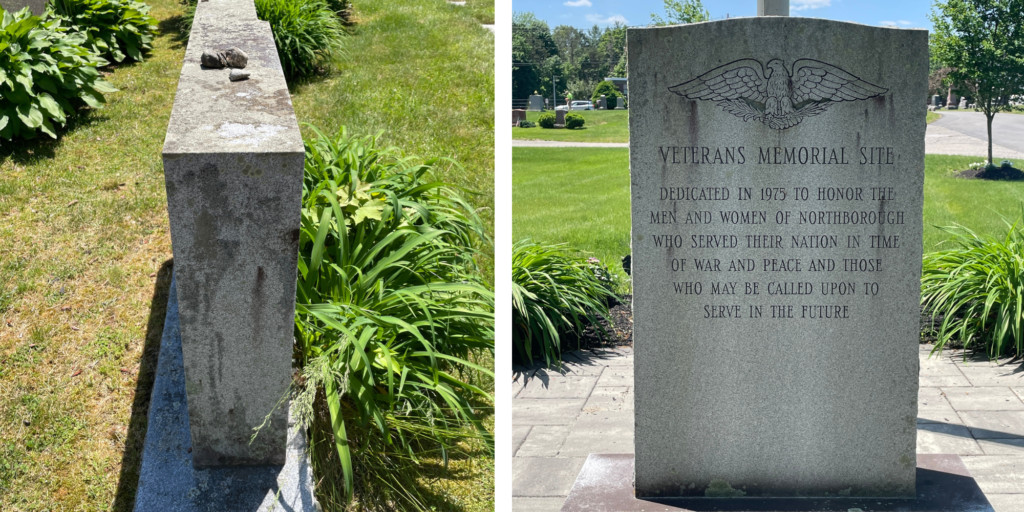
The National Park Service site listed below is an excellent resource, with two videos that are thorough and helpful. It mostly deals with cleaning older gravestones, but the techniques and information are applicable to more modern ones.
Taking time to clean a cemetery grave marker is not lightning fast. It’s slow and gentle and takes time. But that gives you time for reflection, to honor the departed and, if you’re like me, to shed a few tears. Perhaps a yearly cleaning will become a Memorial Day tradition for you.
Sites that were helpful in writing this post:
Cleaning Granite Memorials in the Cemetery, Olivewood Cemetery
How to Clean a Headstone, Patten Monument Company
How to Clean a Gravestone, The Farmer’s Almanac
Cleaning Grave Markers, National Park Service
For more on James A. Garfield and the first Decoration Day, check out this newsletter from the NPS Garfield National Historic Site. His full speech is available here.
